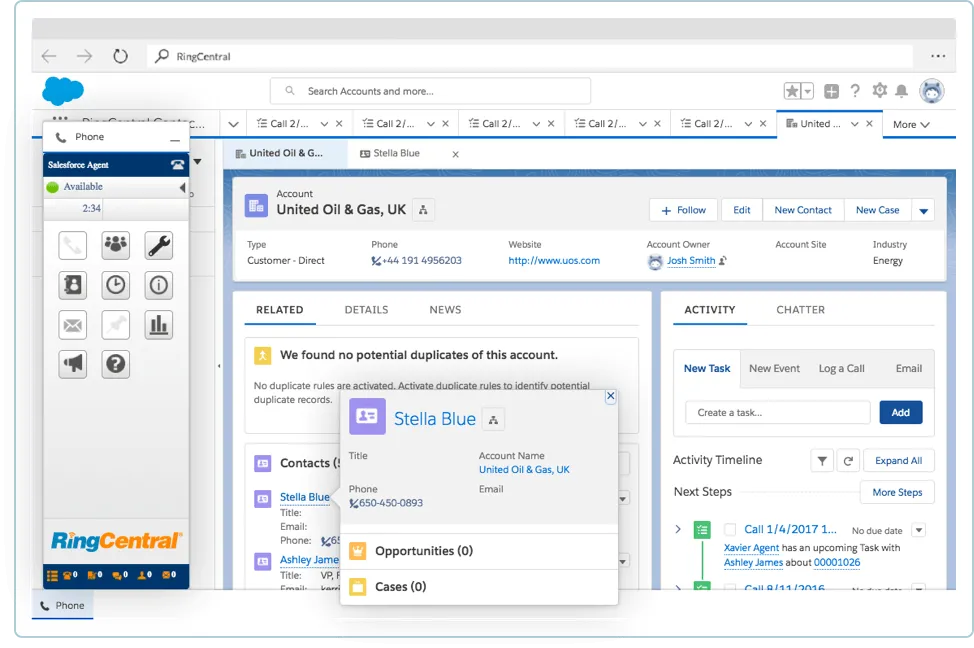
Why does your choice of customer service software matter?
Everyone wants to provide excellent customer service. And as a business, you thrive on customer happiness. But providing that customer satisfaction isn’t always so cut and dry. Luckily, there’s plenty of customer service software solutions on the market to help you achieve your goals.
But plenty of software systems mean that choosing what’s best for your business can become a difficult process. It’s not enough to believe a software platform’s claims: you need to be the one to bring your needs to the table.
Before you dive headfirst into your research, it’s important to understand the foundation of customer service so that you can better understand how customer service software can help.
What are the 3 types of customer service?
Customer service, at its roots, can be broken down into the three ways customers interact with your business: self-service, live service, and delayed service.
No one type is superior to the other, as you’ll hear customer stories for each type heaping on the praise. Rather, each type of customer service has its place on a customer service platform and will have its own advanced features to help it do what it does best.

1. Self-service
Self-service may seem like the least involved form of customer service, but it can actually be quite complicated. When customers help themselves, they are at the mercy of the system you’ve created for them. This has the potential to make or break the customer experience.
You’ll find a lot of sales automation is done through self-service channels. In fact, the automated nature of self-service allows for multiple channels for communication without much maintenance. Many self-service features find their ways onto mobile apps to provide convenience to the customer.
The field of artificial intelligence is always growing, providing new and unique ways for your customers to interact with your brand without increasing your staffing costs. A good example is the use of interactive voice response (IVR), an automation software solution that enables customers to interact with your phone system through voice prompts or keypad entries.
Chatbots are another example. These are AI solutions that simulate human conversations by way of instant messaging. With RingCentral's integrations, you can incorporate a chatbot into your customer service strategy.
2. Live service
This is the type of customer service that you may be the most familiar with, and in fact, it’s the one most intrinsic to human nature. With live service, you’re interacting with a real person in real-time. This could take the form of a live chat through your website’s chat widget or messaging apps. It also takes the form of the traditional call center.
If you’re communicating with a real person in real-time, then it’s live service. One of the main benefits of customer service here is that your support team can provide individualized and dynamic care to a particular customer. To ensure customers are directed to agents with a specific skill set, look for a software solution that offers skills-based routing.
Customers can be given a solution to their problem by the end of the interaction. However, this personalized care for your customers often comes with increased staffing costs.

3. Asynchronous support
Delayed service may sound bad at first, but it simply refers to customer service that doesn’t happen in real-time. This often takes the form of a ticket system, but also applies to digital channels like email and social—where responses from agents are not always immediate. That being said, the conversation is more open-ended in this kind of setup, making more customized solutions possible.
With asynchronous support, a customer will submit a ticket, send an email, or connect through social channels like Facebook or Twitter requesting help with an issue. While response times in a desk ticketing system or digital channel may be an issue if the system gets backlogged, proper ticket management and digital engagement through a shared inbox can ensure that no customer is left hanging. Plus, customers can always come back to the same conversation thread if they encounter similar or other issues in the future.
This type of customer service is seen in businesses of all sizes, but it is particularly effective for small business needs. Because your customer service team isn’t working in real-time, your team members aren’t tied to one customer at a time and can work based on ticket priority without spending time interacting with the customer.
Digital channel engagement and ticket systems are also often used for complaint management. This allows your team to craft well-thought out responses to potentially delicate situations. The delayed nature of this type of service affords your team the time to be able to pinpoint the customer’s issue and help in the most effective way possible.
What is an example of excellent customer service?
Providing excellent customer service is the goal of any business. While there are many ways to do this based on your unique customer base, there are some general traits associated with excellent care. Knowing these can affect your team’s performance for the better.

Excellent customer service:
- Provides real customer satisfaction, whether that means resolving customer questions or improving your customer experience initiatives.
- Improves customer opinions on your brand and elicit positive customer feedback
- Establishes or deepens customer relationships and loyalty
- Works on your customer’s timeline, not yours—and aims at customer success
- Offers a wide range of communication channels (can serve customers on any channel)
- Drives long-term customer engagement
What are customer service systems?
A customer service system refers to the set of processes, technologies, and human resources designed to deliver goods and services that satisfy the needs and wants of customers. The goal is to achieve exceptional customer experience, and everything must work together to achieve it.
A customer service tool is simply the platform you use to communicate with your customers. It’s important to know your customer base and understand which channels they prefer when communicating. In this case, less is often more if you can provide a better service through preferred channels as opposed to mediocre service through multiple shallow ones.
Here are some customer service and support tools that you may already be familiar with:
- Live chat software
- Social media messaging
- Phone system and call center software
- Chatbots for website visitors
- Customer contact centers
- Self-service kiosks
Customer service tools exist for all three types of customer service in both the real and digital world. This wide variety provides you with plenty to choose from, but it also makes your job of finding what’s right for your business more difficult. The most important thing to focus on is what tool works best for your customer that you can feasibly integrate into your platform.How important are customer service knowledge bases?
To put it in one word, customer service knowledge bases are vital. Not only do they provide a channel for your customers to self-serve, but they also provide an essential repository of solutions for your own support team. The easiest way to go about this is to use knowledge base software to assist in the curating and cataloging of your articles. With robust documentation on common problems and solutions, you can prevent your team members from having to reinvent the wheel, so to speak.
Knowledge bases also have the benefit of providing added value to your website. When a customer searches the internet for a solution to their problem, this presents an opportunity for them to be directed to your site. This allows you to not only collect data but also plug the site visitor into your online customer service pipeline to better serve them.

What role does live chat play in customer support software?
Live chat often functions as the ground troops of your customer service software`. They’re your first line of defense when it comes to providing excellent customer experiences. Live chat often provides a customer with their first real-person experience with your business, so they must have a good experience.
Oftentimes, your live chat team serves a vital role in de-escalating a situation. Maybe your customer’s mood has soured due to the slow response time. Maybe the problem they’ve been having is particularly aggravating. Whatever the reason, live chat allows for a real person to respond dynamically to the customer’s needs.
Your live chat team also has the important job of logging customer data after customer interaction. Proper documentation allows for a detailed customer profile that will aid your team in future interactions with that customer. Often, this attention to detail is what turns great customer service into excellent customer service.
What role does a ticket system play in customer support software?
A ticket system is another vital component of customer support software. Sometimes, an issue may be too complicated to solve in one phone call or one live chat. Solutions to problems could even take days, especially if communication with other businesses is needed. This is where a customer support tool like a ticket system shines, providing a delayed service without the risk of your team members losing track of what’s going on as more service requests come in.
While you may be most familiar with the ticket system present in a tech support help desk, there are also backend ticket systems that provide a way to track and document issues as they come up and allows your support team to deal with issues in terms of priority.
A good ticketing system also allows you to track the performance of your own team members and see how well they’re doing or how efficient they’re working.
What is the role of a customer service agent?
A customer service agent is a dynamic and complicated position that often requires a delicate and subtle touch. They can be found in call centers as well as cubicles, providing live chat support, support through a phone system, or solving problems through a ticket system. While, on the surface, a customer service agent solves customer problems, their true function is as a brand representative.
These agents often interact with customers in less than ideal circumstances. Whether something went wrong or there has been a misunderstanding, an agent’s goal is to repair the relationship with the customer and show them the professionalism and traits that your brand values. The role of a customer service agent, then, is this:
- Retains customers
- Establishes, promotes, and improves your branding
- Generates sales
- Provides a human face to your business
What is the CRM software used for?
Customer Relationship Management (CRM) software is primarily used for data logging and internal communication among the teams in your business. The goal of CRM software is to provide an intuitive and robust suite of software features to assist your team in knowing their customers. It’s a vital component to giving your customer service platform that personal touch.
With a strong CRM platform, a customer service agent can better assist a customer by:
- Diagnosing recurring problems for a customer
- Knowing the best way to communicate with a customer
- Making the customer feel like the business is a unified front
- Providing all relevant information to other departments and teams
CRM software isn’t just relegated to desk features, however. You can take your CRM to the cloud and use online CRM software to allow your team members to access the information they need from wherever they are. Whether your support team is telecommuting, on the go, or decentralized, an online CRM approach allows everyone to stay connected without needing to be in the main office.
And it’s not just your support team that can benefit. Sales CRM functionality can help your customer care team identify opportunities to make sales that your customers want. Some CRM software even includes tools to allow for sales automation, connecting the notes your team makes on customers with available products and services in your database.

What are the essential features in CRM software?
Many CRM software platforms come with a host of bells and whistles in their premium plan. When choosing CRM software that works best for your business, there are several key features you want to look for.
Some essential features you want to focus on are those that help with project management and compliance management management, as well as collaboration tools like shared inbox. These features help your team members manage projects in a way that can create documentable progress.
The combination allows you to address customer complaints quickly and effectively. And the shared inbox really takes collaboration to the next level, so one person’s sick day doesn’t hold up productivity.
Another important data tool is time tracking software. You should always be looking to shave seconds off of your customers’ hold times and reduce the time your customers sit with their problem unsolved. By being able to track the time each customer interaction takes, you can start to get a clearer picture of where things can be improved.
You should also look for CRM software that provides customer loyalty tools. One of the goals of excellent customer service is to create lasting relationships with customers. Enthusiastic fans of your brand are not only more likely to stay with you but are also likely to increase customer acquisition through word of mouth. Customer loyalty tools can be used to reward your fans and amplify their goodwill and free advertisement.
You’ll also want CRM software that can integrate into your website and play nice with your website builder and web hosts. A chat widget, for example, that documents the type of interaction your website visitor has with your live chat, can help inform your design process for your website. You want CRM software with analytics and reporting features and the ability to pull customer data from wherever you have it available.
And finally, you want support for mobile devices. Your team may not always have the luxury of being in front of their office computer, so a CRM mobile app gives them the flexibility to access data wherever they are. This is one of those top features that you may not realize you need until it’s too late.

How does customer service software benefit my call center?
Your call center is made up of any number of individuals, and your customer base is made up of even more. The odds that any given team member will interact with the same customer multiple times is fairly low, even if that customer is a regular. Customer service software allows your call center to provide consistent service even if your team has changed or your customer is working with a different team member.
Customer service software, like the one offered by RingCentral, primarily allows your team members to leave information on customer profiles so that future interactions with that customer can be customized to previous conversations.
Small details about a customer that help provide that personal touch make the customer feel like they’re taken care of. And a history of past interactions can help reveal a pattern or clue in your team members that a problem may need a different helpdesk software solution.
The software system can also choose the right customer for the right team member based on past interactions and data. Customers that may require a more seasoned team member won’t be placed with newbies, creating a win-win for both the customer and your team. These kinds of management systems work best as an automated process.
How can customer management software improve customer experiences?
Good customer service solutions remove barriers—for both you and your customers. This reduction in barriers improves customer communications, reduces wait time, and allows you to cater the experience to your customer. The general state of things is that customers always dread interacting with a business, so when you’re able to provide them with excellent service, they are more than pleasantly surprised.
Customer management software does this primarily by enabling your support team to provide a personalized, human touch to your customers through data logging and robust backend systems that bridge the gap between customer and support team. It automates procedures, provides opportunities for lead generation, and streamlines the process of creating win-win situations.
Ultimately, customer management software enables your team to focus on their jobs, as opposed to all the busywork it might entail.
What is the best software for customer service?
The best way to determine the best customer service software for your business is to first figure out your main communication channels in the three types of customer service. While less is more, you still want to provide your customers with a multitude of ways to communicate with your support team.
By providing options in all three categories, you can ensure that your customers communicate with you in the method they are most comfortable with on the timeline that works best for them.
The customer service software tools that work best for you will:
- Provide platforms to communicate with your customers, such as live chat software
- Have all key features, such as data management and customer loyalty tools
- Be intuitive and easy for your team to use
- Integrate into your existing customer service environment
If you’re in-market for a calling solution at an affordable price, then you should check out RingCentral. Click on the “View Demo” button in the top right-hand corner and see how it might be the right fit for your business.